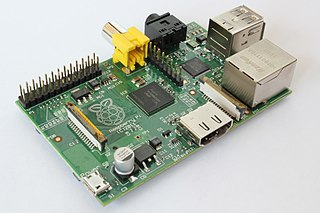It’s a rare product indeed that surpasses expectations as utterly and thoroughly as the Raspberry Pi did this year.
Conceived as an educational tool that would be used in teaching kids to program, the device has since gone on to inspire countless new uses that must surely boggle the minds even of its creators.
Whole new websites have sprung up dedicated to showcasing new and creative applications of the Raspberry Pi; numerous books have been written to help bring them to life. The official forums, meanwhile, are overflowing with even more ideas. We’ve seen the diminutive device used to create a weather information system, a doorbell server, a robot, a coffee machine, and a supercomputer–to name just a few examples.
The list goes on and on, but if one thing has become clear, it’s that potential uses for the tiny Linux machine are limited only by the bounds of the human imagination.
‘Useful and Innovative’
“The Raspberry Pi is interesting and exciting for a couple of reasons,” Jay Lyman, a senior analyst with 451 Research, told Linux.com.

“First, it demonstrates how useful and innovative Linux and open source software still are today, particularly in educational situations,” Lyman explained. “Linux and open source software make sense economically, since it is free or–in the case of Raspberry Pi, relatively inexpensive–to acquire and use the technology.
“Linux and open source software also make sense educationally since source code can be accessed, viewed, and used by teachers and students,” he added.
Finally, “the Raspberry Pi device and community are also indicative of the ongoing effort to leverage Linux and open source software to bring meaningful, low-power, and low-cost computing and computer science to the masses, and particularly to students in less-advantaged geographies where they might not otherwise have that opportunity.”
‘We Believe We Can Be a Catalyst’
Will this inspiring Linux device succeed in closing the Digital Divide, where so many other efforts have failed? Only time will tell.
In the meantime, the Raspberry Pi was recently crowned the Innovation of the Year by gadget-focused website T3, as well as earning the 18th spot on PCWorld’s 100 Best Products of 2012, among other awards.
More than 700,000 Raspberry Pi boards have been sold since their launch in February, according to a recent TechRepublic report that also offers a glimpse inside a UK Raspberry Pi factory responsible for producing some 3,000 of the devices each day. Starting in January, production there is reportedly slated to ramp up to 4,000 boards daily.
All this from a little project to improve computer-science education.
“We don’t claim to have all the answers,” explains the Raspberry Pi Foundation on the project website. “We don’t think that the Raspberry Pi is a fix to all of the world’s computing issues; we do believe that we can be a catalyst.
“We want to break the paradigm where without spending hundreds of pounds on a PC, families can’t use the internet,” the project team adds. “We want owning a truly personal computer to be normal for children.”
The foundation added that it expected 2012 to be “a very exciting year,” and it certainly seems safe to say it was right.
At least as exciting, however, will be watching what 2013 brings.
Image credits: Raspberry Pi photo courtesy Wikimedia Commons, Creative CommonsAttribution-Share Alike 3.0 Unported license.


